At Trifox, we believe that confidence in your equipment is fundamental to riding performance. This is especially true for components like handlebars that directly impact both control and safety. Our carbon integrated handlebars undergo some of the most rigorous testing in the industry, culminating in destructive failure tests that push materials far beyond normal use limits. Here's an inside look at how we ensure every bar, like our Carbon Integrated Handlebar RHB100, meets our exacting standards.
The journey to failure begins long before the actual break. We start with raw material validation, ensuring the carbon fiber weave and resin matrix meet precise specifications for strength, stiffness, and weight. Each batch of material is tested for consistency, because superior components start with superior ingredients.
Once a handlebar like the Trifox RHB100 is molded and finished, it enters our mechanical testing lab. The most critical test is the static load test to destruction. The bar is mounted in a fixture that simulates a bicycle stem clamp. We then apply increasing force to the drops, the hoods, and the center section independently, measuring deflection until the point of catastrophic failure. This data tells us not just the ultimate strength, but also the bar's stiffness profile and how it behaves under extreme stress. For an aero handlebars design, we also test for torsional rigidity, ensuring the aerodynamic shape doesn't compromise handling precision.
Beyond static force, we perform fatigue testing. Here, we subject the handlebar to thousands of cycles of repetitive, lower-level stress—simulating years of rough terrain, sprinting, and out-of-saddle climbing. This test is crucial for uncovering potential weaknesses that might not appear in a one-time strength test. It proves the component's durability and longevity, a key factor for riders considering the best mountain bike riser handlebars for aggressive trail use.
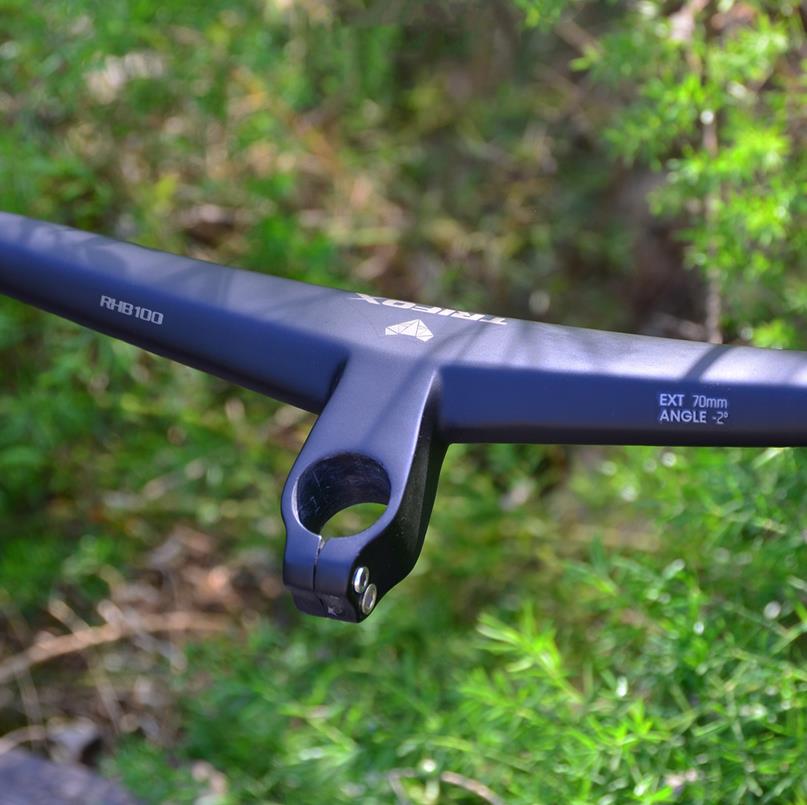
Why do we deliberately destroy our products? Because safe design requires knowing the exact boundaries. By understanding how and when a bar fails, we can engineer it to be massively strong in real-world conditions. The failure point in our tests is typically 3-5 times higher than the maximum forces a rider could ever generate, creating a huge safety margin. This process validates our finite element analysis (FEA) models, allowing us to optimize material placement. We can add strength where it's needed (like at the clamp and lever areas) and reduce weight where it's not, achieving the perfect balance.
The Trifox RHB100 Carbon Integrated Handlebar is a product of this philosophy. Its one-piece monocoque construction eliminates weak points from bonding. The aero-profile top section is designed not just for speed, but also for optimal stiffness and vibration damping. The testing regimen ensures that whether you're seeking aero handlebars for road racing or robust best mountain bike riser handlebars for technical descents, the underlying principle is the same: unshakeable reliability.
This commitment to empirical validation means when you choose a Trifox handlebar, you're not just choosing a lightweight or aerodynamic component. You're choosing a piece of equipment with a verified performance envelope, engineered to inspire confidence on every ride. We don't just build handlebars; we build trust, one destructive test at a time.
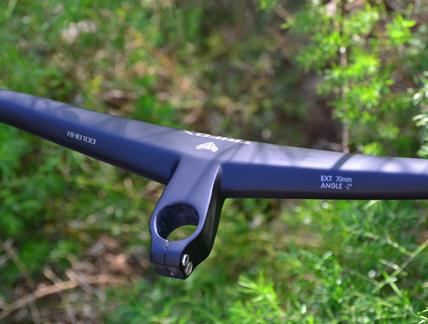

For many riders, the quest for comfort leads to a simple conclusion: a softer saddle must be better. This instinct often backfires. A saddle that feels like a plush couch in the showroom can transform into an instrument of discomfort on a long ride. Why? Because true comfort isn't about maximum softness; it's about intelligent pressure distribution. The materials inside your saddle—foam, gel, and advanced composites—are engineered not just to cushion, but to create a stable, supportive platform that places pressure precisely where your body is designed to handle it.
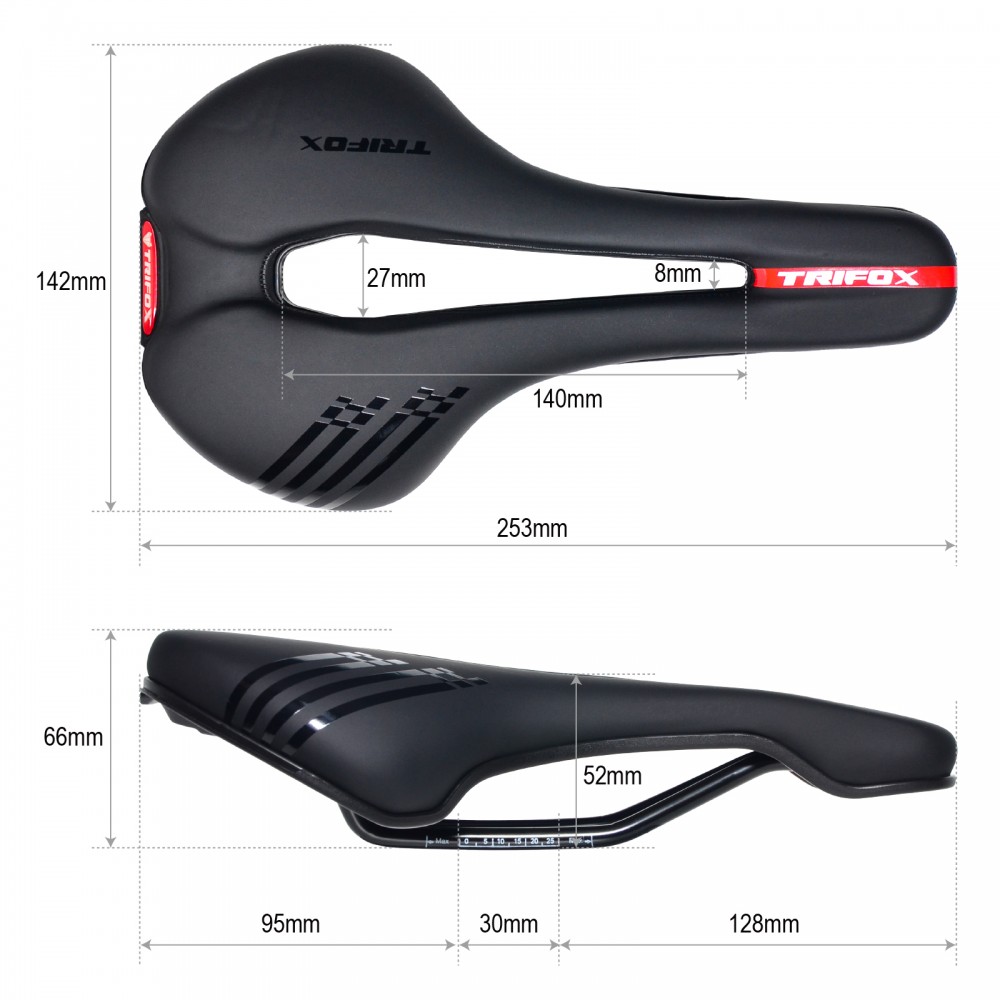
The Problem with "Soft": The Hammock Effect
Imagine sinking into a soft sofa or a loose hammock. Initially, it feels great. But soon, your body sinks until it meets resistance, often concentrating force on your soft tissue and pelvic bones. A saddle with overly soft, uniform padding does the same. Your sit bones (ischial tuberosities) push through the soft material, bottoming out and creating intense pressure points. This lack of support can also lead to instability, chafing, and numbness. A comfortable bicycle seat doesn't invite you to sink in; it provides a firm, supportive platform to sit on.
Material Science: The Tools for Intelligent Support
Modern saddles use advanced materials to solve this problem, moving beyond a one-thickness-fits-all approach.
High-Density & Multi-Density Foam: The Precision Tool
This is the cornerstone of performance saddle design. Instead of a single soft layer, engineers use varying densities:
Firm, High-Density Zones: Located directly under your sit bones. This dense foam resists compression, providing a stable platform that prevents sinking and effectively supports your skeletal structure.
Softer, Lower-Density Zones: Placed in the surrounding areas and along the center channel. This foam absorbs vibrations and provides gentle cushioning without compromising the critical structural support of the firmer zones.
This "multi-density" approach is like having a custom-molded base layer: firm where you need support, forgiving where you need relief.
Gel Inserts: Targeted Damping
Gel is excellent at dissipating sharp impacts and high-pressure points in a static setting. However, its drawbacks are weight, poor breathability, and a tendency to create a "quicksand" feel if overused, absorbing energy and causing slight instability during pedaling. Therefore, in well-designed saddles like the Trifox Comfortable Saddle, gel is used strategically as an insert, often in the nose or specific high-pressure areas, to add a layer of dampening on top of a supportive foam base. It's a supplement, not the main structure.
Shaped & Variable-Thickness Padding: The Holistic Approach
The most advanced designs combine material density with physical shape. Through pressure mapping and biomechanical research, saddle padding is carved to be thicker in supportive areas and thinner or absent in zones that require relief (like the critical perineal area). This 3D shaping ensures the right amount of material is in the right place, working in concert with the saddle's shell to create a unified support system.
The Trifox Design Philosophy: Engineered Comfort
The Trifox PU Leather Comfortable Saddle exemplifies this intelligent approach to pressure management. It moves beyond the old "soft vs. hard" debate by focusing on structured support.
PU Leather & Resilient Padding: The high-quality PU leather cover provides durability and a slight give, while the underlying cushioning system is designed for resilience and support over many miles.
Ergonomic Shape is Key: The saddle's shape features a central relief channel, a fundamental design element that alleviates soft-tissue pressure by ensuring no contact or minimal pressure in the midline. This works in tandem with the padding to direct support to the sit bones.
Focused on Lasting Support: The goal isn't initial plushness that fades, but consistent, dependable support that reduces fatigue and hotspots, allowing you to focus on your ride, not your discomfort.
Support Over Softness
Choosing a bicycle saddle based on padding thickness alone is a common mistake. The science of comfort is about differential support—using materials like multi-density foam and strategic shaping to create a stable platform that distributes your weight efficiently. It’s the difference between sinking into a problem and sitting on a solution. When your sit bones are properly supported, pressure is healthily distributed, and soft tissues are relieved, you unlock the true potential for a comfortable bicycle seat that enhances, rather than hinders, every ride. Look for design intelligence, not just squishiness.
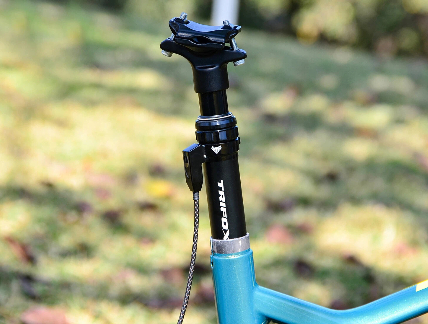
In mountain biking, a dropper post is more than a component; it's an extension of your body, a dynamic tool for reshaping the bike beneath you. While travel length gets the headlines, the true soul of a high-performance dropper lies in two intangible qualities: control and speed. Not just how fast it moves, but the confidence, precision, and consistency of that movement. A post that stutters, lags, or requires a second thought breaks your flow. A truly great post, like the Trifox AP309, disappears into the ride, becoming an instinctive lever for control that directly translates to more speed.
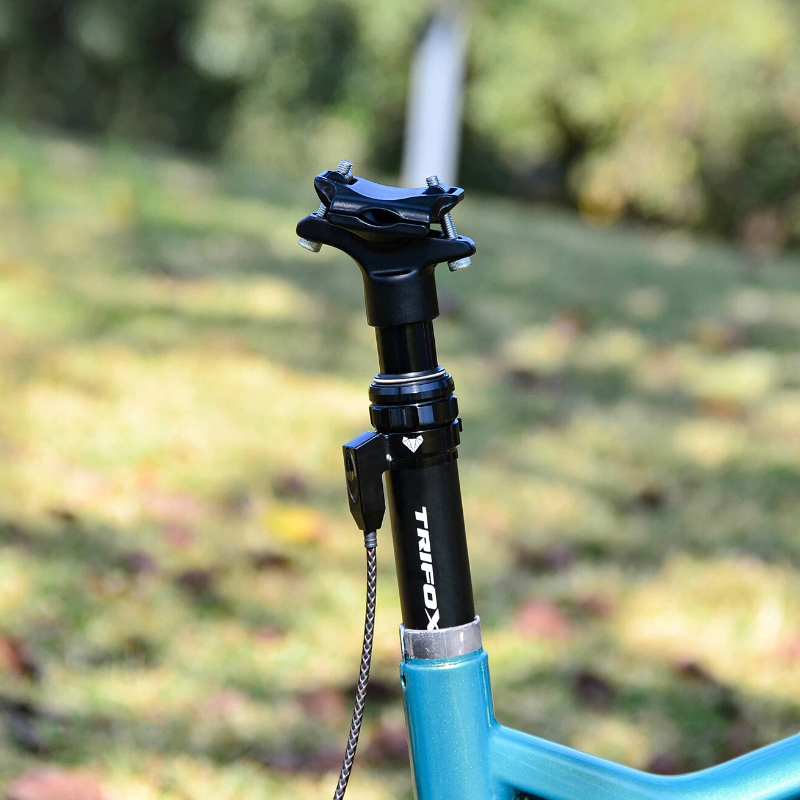
The Anatomy of Perfect Control: Frictionless and Instinctive
Control begins the moment your thumb touches the remote. It should feel like an extension of your will.
The Remote: Your Direct Link
The ergonomics and leverage of the remote are critical. The AP309 features a responsive remote lever designed for single-finger operation. The action is engineered to be smooth, requiring a consistent, manageable force—not a hard punch or a vague mush. This precise mechanical feel gives you subconscious confidence that the command has been received, allowing you to focus entirely on the trail ahead.
Versatile Cable Routing for Reliability
A key aspect of reliable control is how the command is transmitted. The AP309 offers versatile routing to suit any frame and preference:
External Routing (Top/Mid): The classic, simplest setup. The cable is routed externally along the frame, offering the easiest installation, maintenance, and most direct cable pull for consistent lever feel. This is the go-to choice for maximum reliability and simplicity.
Internal Routing (Full): For a clean, streamlined look, the cable can be routed internally through the frame. This protects the cable from debris and snags, maintaining a clean aesthetic.
This flexibility ensures you can achieve optimal cable routing on any bike, eliminating sharp bends or friction points that can compromise the smooth "press-and-drop" feel.
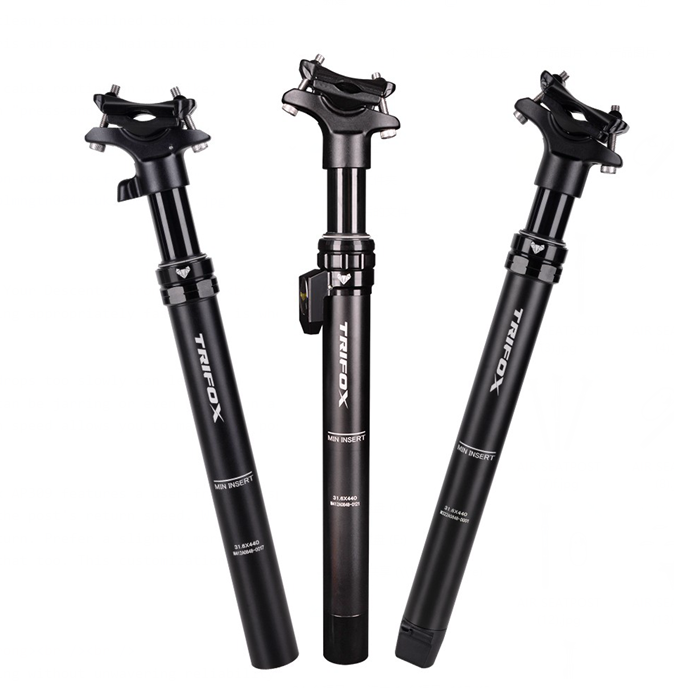
The Power of Adjustable Speed: Tailoring Your Descent
Speed isn't just about being fast; it's about being appropriately fast. This is where adjustability becomes a game-changer.
Why Speed Matters: A post that drops too slowly can leave you awkwardly waiting in a technical section. One that snaps up too quickly can be jarring or even unsafe on a climb transition. The ability to fine-tune both the drop speed and return speed allows you to match the post's behavior to your riding style and the trail's demands.
The AP309's Approach: The Trifox AP309 features a user-friendly speed adjustment system. Through a simple dial, you can independently control the post's return speed. Want a lightning-fast drop for quick, repeated features? Dial it for a quick return. Prefer a slightly more controlled, damped rise for smooth XC pedaling transitions? You can set that too. This customization makes the post an active part of your technique, not just a passive tool.
Reliability: The Foundation of Trust
All the control and speed in the world mean nothing without unwavering reliability. A post must work flawlessly, ride after ride.
Robust Construction & Sealed Design: The AP309's 30.9mm diameter provides a solid, torsion-resistant platform. Its core utilizes a reliable air spring system, known for its consistent performance across its 125mm of travel. Crucially, it's equipped with effective dust and moisture seals that protect the sensitive internal mechanism from trail grime, preventing the friction and stickiness that lead to failure.
Consistent Performance Under Load: A true test of a dropper is its performance when the bike is sideways or under lateral load. The AP309's internal valve system is designed to provide consistent, reliable actuation regardless of bike angle, ensuring you get that critical saddle drop even when you need it most in a steep, off-camber section.
The Trifox AP309: Engineered for the Experience
The Trifox AP309 Dropper Post embodies the principles of control and speed. It's not just a lightweight dropper post (a benefit of its efficient air-spring design); it's a thoughtfully engineered control interface. As a versatile 30.9mm external dropper post with multiple routing options, it prioritizes reliable cable actuation above all. By combining this with adjustable action and a robust, sealed build, the AP309 is built to become an invisible, yet indispensable, part of your riding—transforming your bike into a dynamic partner that actively helps you ride faster, smoother, and with more confidence.
Conclusion: The Invisible Advantage
The ultimate compliment for a dropper post is that you forget it's there. You don't think about the cable routing or the mechanics; you simply use it. Your body learns it, trusts it, and incorporates its movement into your flow. When control is immediate, speed is tunable, and reliability is absolute, the post stops being a piece of equipment and starts being a part of your skillset. It is the key to unlocking a more fluid, confident, and ultimately faster ride. Choose a post defined by control and speed, and feel the difference on every trail.

Unlocking the full potential of a modern cross country full suspension bike is an art. A frame like the Trifox Trail II Pro offers a lightweight, stiff carbon platform designed for efficiency, but its rear shock needs precise tuning to match. A poorly tuned shock can make even the best double suspension mtb feel harsh or wallowy. This guide will help you sync your shock with your frame's personality for a ride that’s both fast and forgiving. 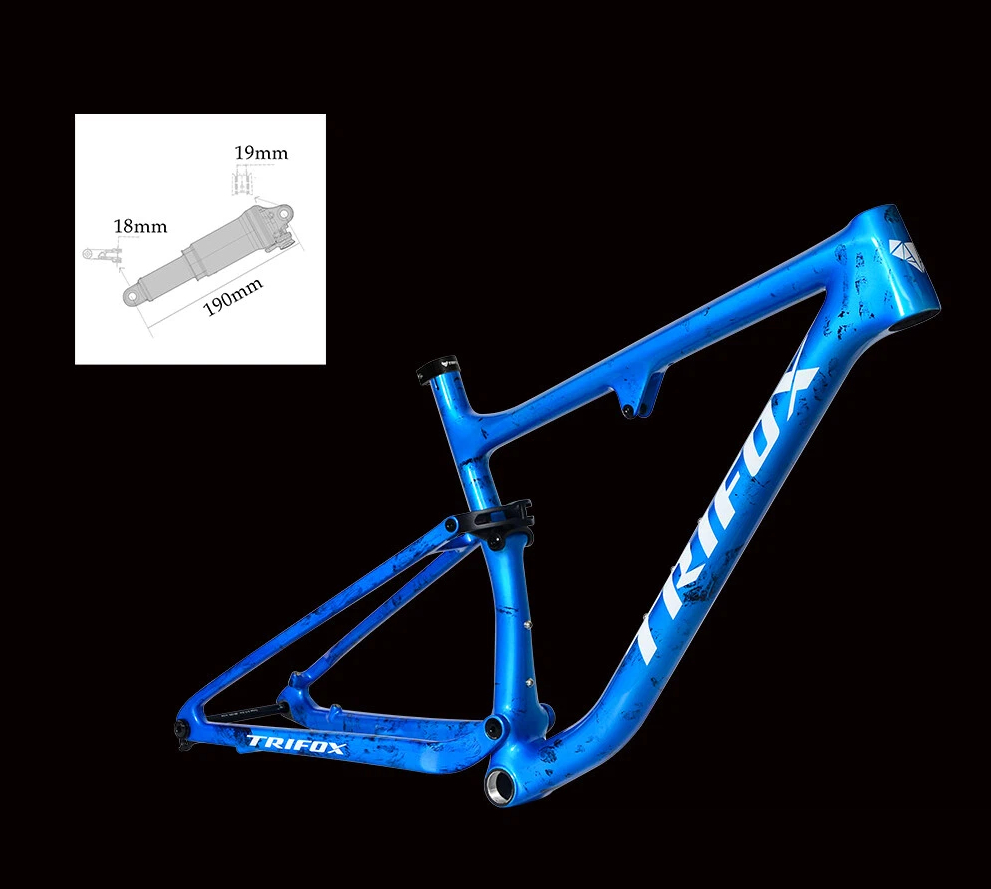
Step 1: Foundation – Setting Sag and Leverage Rate
Every setup begins with sag—the amount your shock compresses under your weight in a neutral riding position. For an XC-focused frame, aim for 20-25% sag. This balances pedaling efficiency with bump absorption.
Why it matters for carbon frames: Carbon’s high stiffness translates pedal input directly. Correct sag ensures the suspension is in its optimal part of the stroke to react to trails without wasting energy.
Pro Tip: Know your frame's leverage ratio. The Trail II Pro is designed with a specific progressive or linear curve. Check the manufacturer's guide; this tells you how the shock feels through its travel. A progressive frame (common in modern designs) helps prevent bottoming out on big hits.
Step 2: Controlling the Motion – Rebound Damping
Rebound damping controls how quickly the shock returns after compression. This is crucial for maintaining traction.
Too Fast: The bike feels springy and can "kick back," losing tire contact.
Too Slow: The shock "packs down" over successive bumps, feeling harsh and reducing travel.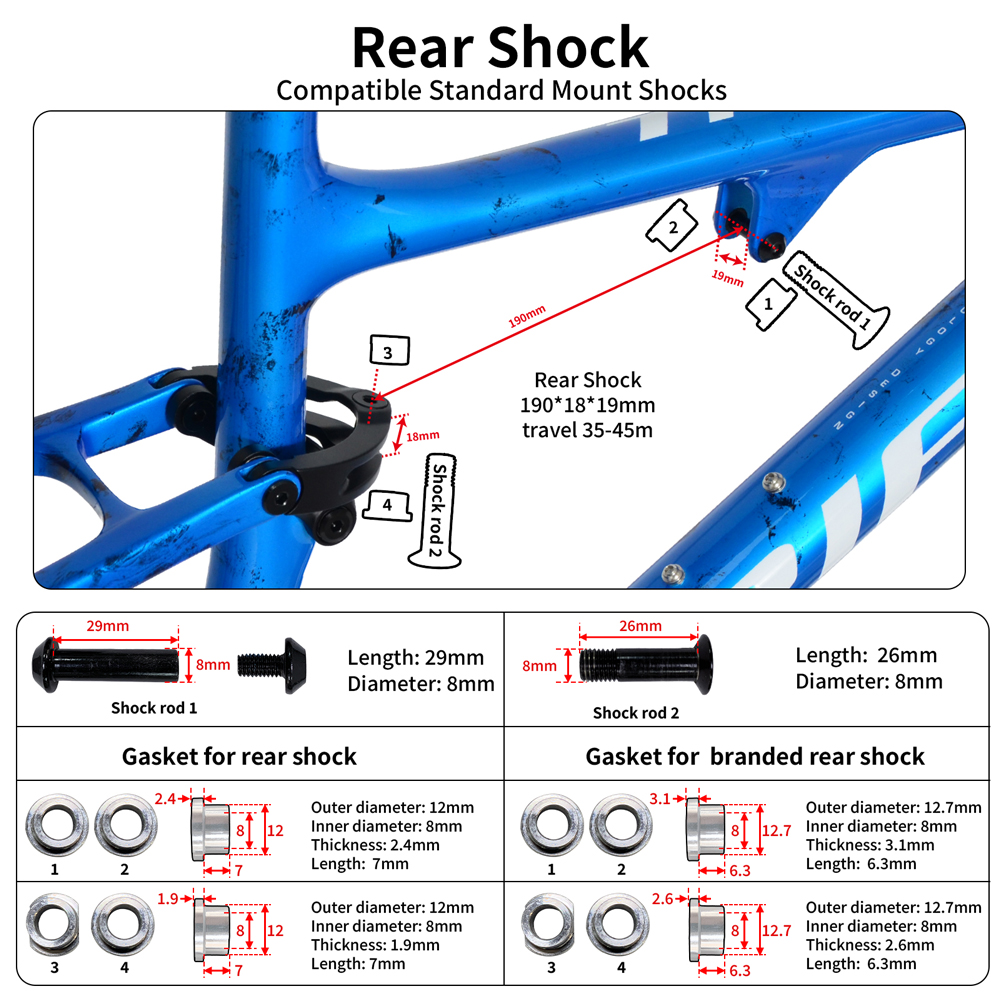
Setting Rebound:
1. Set sag correctly first.
2. Find a bumpy trail or series of curb drops.
3. Start with rebound fully open (fast). Ride and gradually add clicks (slow it down).
The Goal: The rear wheel should recover quickly enough to handle the next bump but not so fast it causes the bike to bounce. The rear should feel "calm" and controlled.
Step 3: Refining the Feel – Compression Damping
Compression damping controls how the shock compresses under force. Most XC shocks have low-speed compression (LSC) for pedaling/platform support.
LSC Tuning: Start with LSC fully open. On a smooth climb or while pedaling hard on flat ground, add clicks until you feel a noticeable reduction in unwanted bob without making the ride feel harsh over small bumps. The goal is a firm, efficient platform that still remains active.
The Critical Link: Frame Bushing & Bearing Care
Your tuning is only as good as the mechanical connection between the shock and frame. Friction from dry or worn pivots destroys sensitivity.
The Trifox Advantage: The Trail II Pro includes a set of premium 190x18mm and 190x19mm replacement bushings, compatible with major shocks from Fox and RockShox. This ensures you always have a perfect-fit, low-friction interface on hand.
Maintenance: Regularly check pivot bolts for proper torque (use a torque wrench!). Annually, or if play develops, inspect bushings and bearings for wear. A well-lubricated, slop-free pivot system allows your finely tuned shock to perform exactly as intended, translating every damping click into a tangible trail feel.
Final Tune: Match Shock to Frame Intent
Understand your frame's design goal. The Trail II Pro is a lightweight XC race machine. Prioritize a setup that favors:
Efficient climbing (firmer LSC, proper sag).
Traction and control on technical, rocky ascents (balanced rebound).
Confidence on descents (enough progression and damping to handle drops).
Don't be afraid to make small adjustments and test. Terrain changes, and so should your setup. Start with manufacturer base recommendations, then use this guide to personalize. When your shock’s dynamics are in harmony with your carbon frame's stiffness and geometry, you’ll experience the true synergy of a modern cross country full suspension bike—where every watt of effort propels you forward, and every trail feature is an opportunity, not an obstacle.
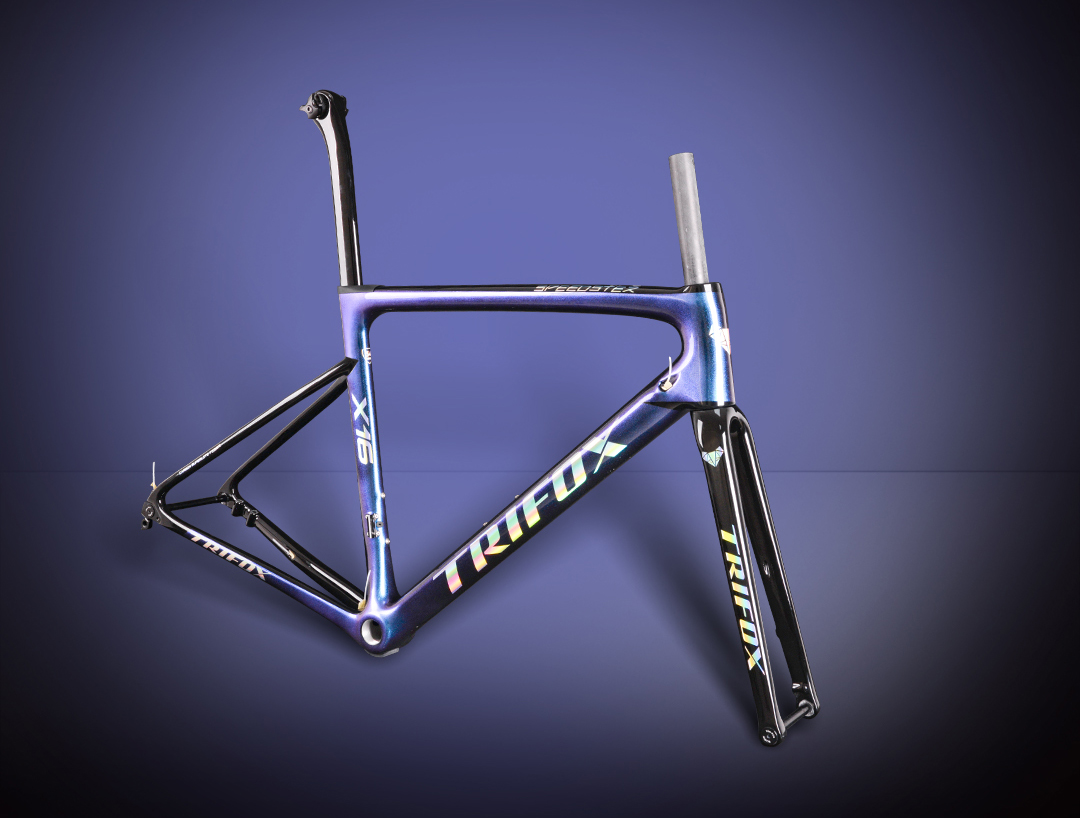
What makes a road bike frame truly popular? It's not just hype – it's the perfect blend of performance, value, and real-world usability. Trifox's X16 Disc Brake Carbon Frame consistently tops their charts, and for good reason. Let's dive into what makes this frame a standout choice for discerning riders:
Uncompromising Lightweight Performance: Crafted from high-modulus T800 carbon fiber, the X16 boasts an impressive frame weight hovering around 900g (size dependent). This translates directly to snappier acceleration, effortless climbing, and a lively, responsive ride that feels eager under power. It's pure road buzz without the penalty.
Disc Brake Dominance: Embracing the modern standard, the X16 features flat-mount disc brake compatibility. This means superior stopping power in all conditions – wet descents, tight corners, or emergency stops – offering consistent modulation and control that rim brakes simply can't match. Confidence is key to speed.
Stiffness Meets Comfort: Trifox engineers didn't just chase grams. The X16 features a stiff front triangle (head tube, down tube, bottom bracket) for razor-sharp handling and efficient power transfer when you stomp on the pedals. Yet, the carefully shaped thin seatstays and fork provide crucial vertical compliance, absorbing road buzz and reducing fatigue on longer rides. You get race-ready feedback without the harshness.
Modern, Versatile Geometry: The X16 strikes a brilliant balance. Its geometry leans towards aggressive (think shorter headtubes, longer reaches) for efficient power output and aerodynamic potential, yet remains accessible enough for spirited club rides and gran fondos. It’s a frame built for speed that doesn’t demand a pro-level contortion.
Smart, Rider-Focused Design:
Threaded Bottom Bracket (BB86): A massive win for reliability and home mechanics. No press-fit creaks here! Easy installation and long-term peace of mind.
Full Internal Cable Routing: Creates a sleek, aerodynamic profile while protecting cables and hoses from the elements. Looks pro, functions flawlessly.
Wide Compatibility: Accommodates electronic and mechanical groupsets, 28c+ tires (great for comfort/rough roads), and standard 27.2mm seatposts for tuning ride feel.
Why the X16 Resonates:
It delivers pro-level pedigree (lightweight carbon, advanced shaping, disc performance) at a direct-to-consumer price that makes high-performance cycling genuinely accessible. You're not paying for flashy marketing or dealer markups – just exceptional engineering focused on the ride.
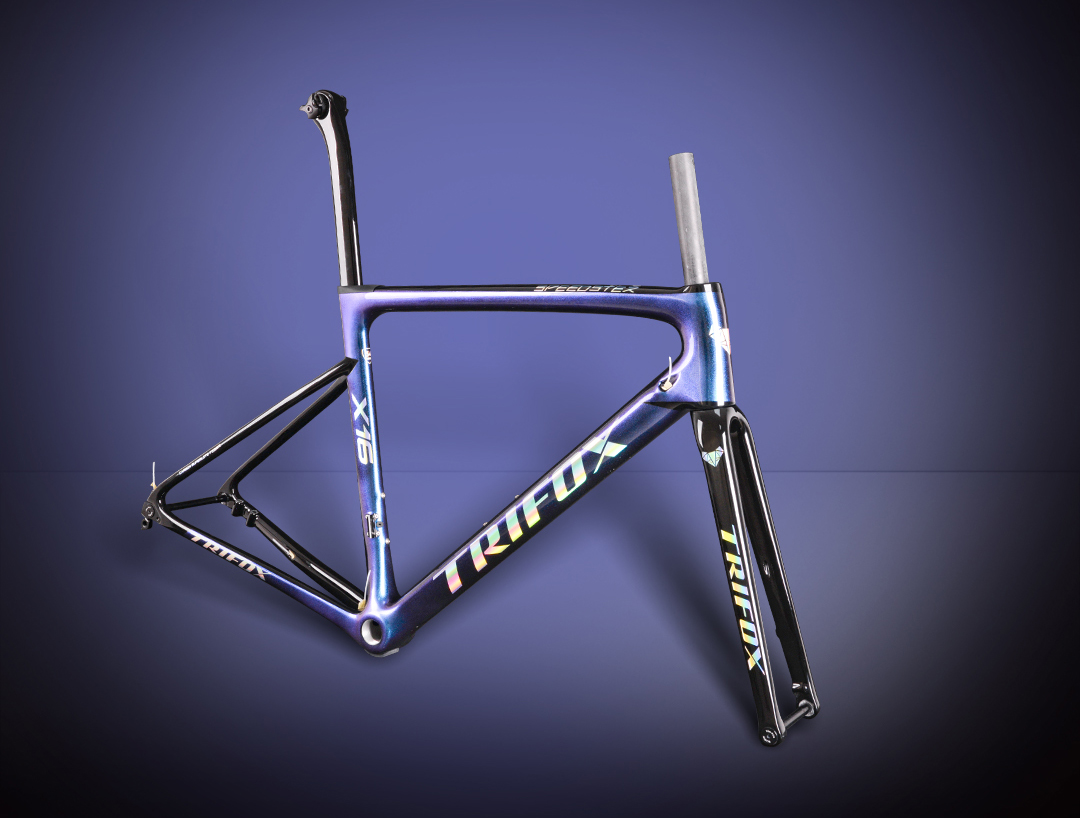
The Trifox X16 isn't just popular; it's popular for a reason. It masterfully combines the essential ingredients modern road riders crave: lightweight carbon efficiency, the confidence of disc brakes, a balanced blend of stiffness and comfort, and practical, reliable design – all wrapped up in a package offering outstanding value. If you're seeking a frame that punches far above its weight class and forms the foundation of a truly exciting road machine, the X16 is Trifox's testament to smart performance.
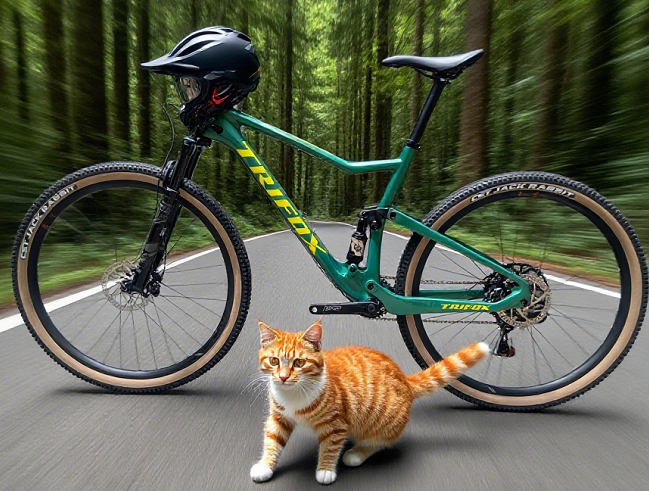
Remember when carbon fiber was reserved for pro pelotons and deep-pocketed racers? Not anymore. Mountain biking is witnessing the unstoppable rise of carbon, transforming trails from XC loops to gnarly enduro descents. Brands like Trifox are making this once-exotic material accessible, proving carbon MTBs aren't just lighter – they're better riding machines. Here's why the shift is seismic:
Featherweight Flight: This is the headline. Carbon frames slash pounds off alloy counterparts. Less weight means easier climbing, quicker acceleration, and less fatigue over long days. You carry the bike less; the bike carries you more. Trifox's carbon hardtails and full-suspension rigs exemplify this advantage, turning arduous ascents into achievable efforts.
Stiffness Meets Sensation: Carbon isn't just light; it's incredibly tuneable. Engineers craft frames with targeted stiffness where it matters most: the bottom bracket for efficient pedaling, the head tube for precise steering. Yet, carbon's magic lies in its ability to also offer vertical compliance. It absorbs smaller trail chatter better than alloy, reducing arm and leg fatigue, letting you ride harder, longer.
Strength You Can Trust: Forget the "fragile" myth. Modern carbon layups create structures incredibly resistant to impacts and fatigue. When designed correctly (like Trifox's robust mountain frames), carbon handles rock strikes, drops, and rough terrain with impressive resilience. It won't dent like aluminum and shrugs off corrosion.
Ride Refined: The combination of lightness, stiffness, and subtle flex translates to a more connected, responsive, and lively feel. You feel the trail without being beaten by it. Carbon bikes track better through corners, feel more nimble in the air, and offer a directness that boosts confidence when pushing limits.
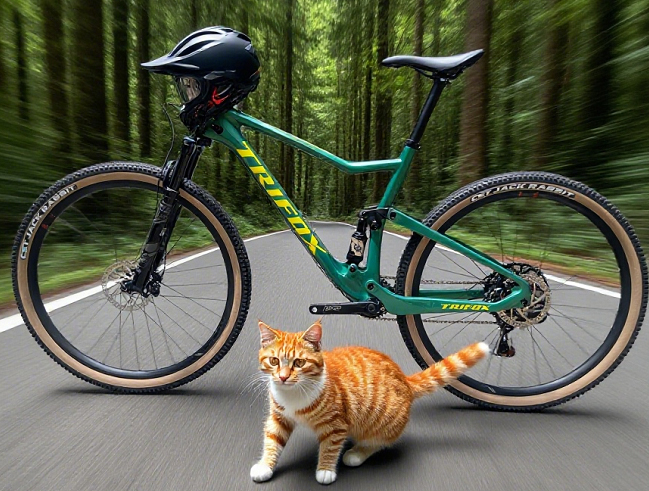
Trifox: Bringing Carbon to the Trail
Brands like Trifox are crucial to this rise. By leveraging efficient manufacturing and direct-to-consumer models, they deliver high-performance carbon mountain bikes at astonishingly competitive prices. Whether it's their agile carbon hardtails perfect for XC and trail blasting, or their capable full-suspension platforms, Trifox proves you don't need a pro contract to experience the carbon revolution.
The Verdict: Not Just a Trend, The Future
The rise of carbon fiber in mountain biking isn't just hype; it's a fundamental shift driven by tangible performance benefits. It offers a superior blend of weight, strength, stiffness, and ride quality that alloy struggles to match. As manufacturing advances and brands like Trifox make it more accessible, carbon is becoming the material of choice for riders seeking every advantage on the trail. It’s not about replacing alloy entirely, but about offering a compelling, high-performance option that’s redefining what’s possible on two wheels. Ready to feel the difference? Explore the carbon evolution: Discover Trifox Mountain Bikes.
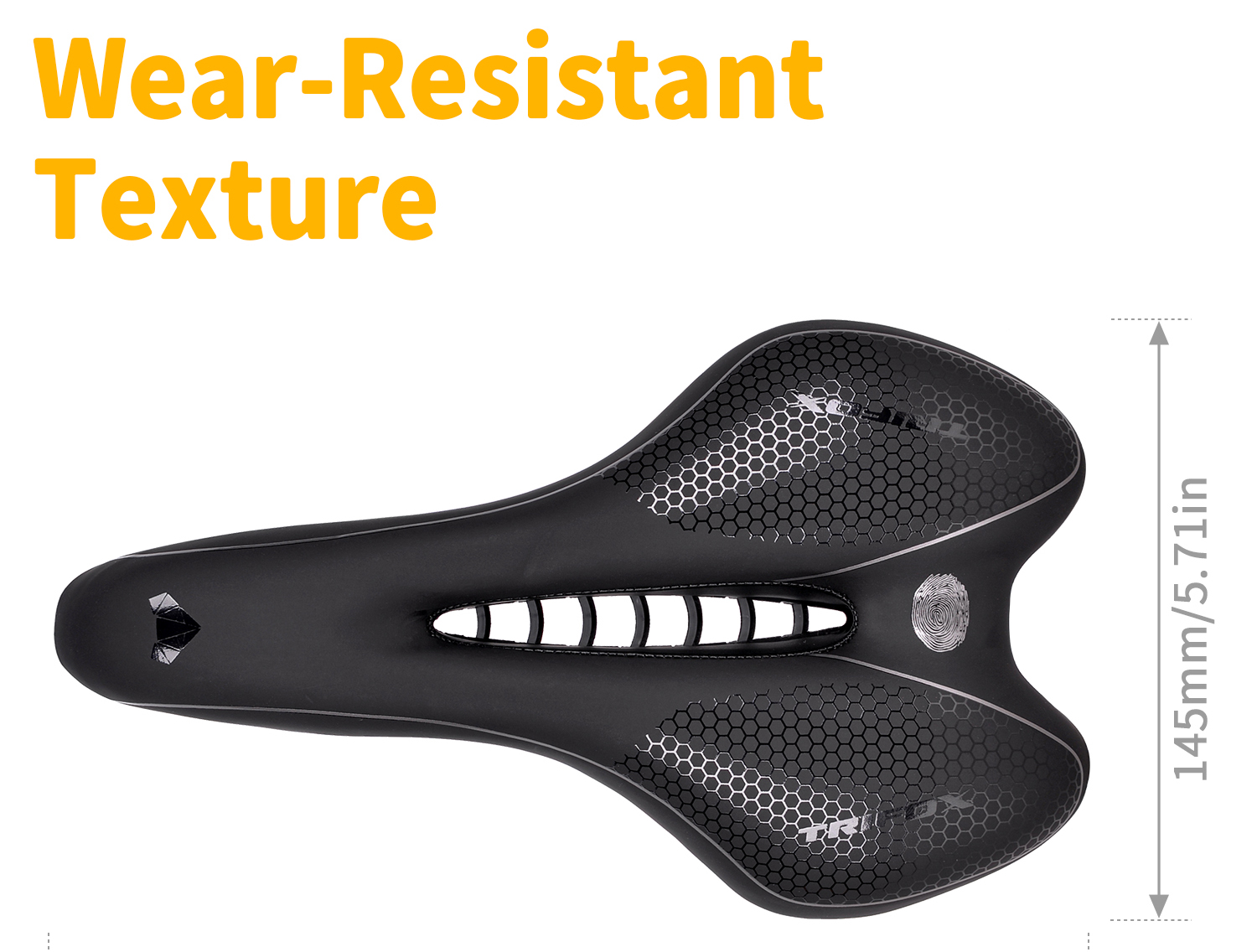
That stock saddle on your road bike? It served its purpose getting you started. But if you're chasing performance, comfort, or simply a more refined ride, upgrading to a full-carbon saddle like the Trifox CS200 is a game-changer. Forget the misconception that carbon is harsh – modern designs blend featherweight efficiency with surprising comfort. Here's why the switch is worth it:
1. The Weight Weenie Wins: This is the obvious one. At a claimed 120 grams, the Trifox CS200 utterly demolishes typical alloy-railed saddles (often 250g+). Shedding 100+ grams directly off your bike, especially high up and at the contact points, makes a tangible difference. It's pure acceleration, easier climbing, and the satisfaction of marginal gains realized. Every watt feels more efficient.
2. Stiffness = Power Transfer: Carbon fiber's inherent stiffness isn't just for weight savings. It means virtually zero flex under power. When you stomp on the pedals, every ounce of energy goes into propelling you forward, not lost compressing padding or flexing the shell. You'll feel a more direct, connected drive, especially during sprints and out-of-the-saddle efforts.
3. Engineered Comfort (Yes, Really!): "Carbon must be hard!" is the biggest myth. Saddles like the CS200 use carefully sculpted shapes, strategic flex zones in the carbon base, and minimal high-density padding precisely where needed. This provides targeted support to your sit bones, reducing pressure on soft tissue. Less padding can actually mean less numbness on long rides, as your weight is correctly distributed. The shape is key, and many find carbon shells conform better over time.
4. Breathability Matters: Ever finished a long ride feeling swampy? Full-carbon bases are inherently perforated or designed with significant cutouts/channels (like the CS200). This promotes airflow, drastically reducing heat and moisture buildup. Enhanced ventilation equals greater comfort and reduced friction, ride after ride.
5. Durability & Low Maintenance: Carbon fiber is incredibly resilient to fatigue and corrosion. Unlike leather or synthetic covers that can degrade, or rails that can rust, a quality carbon saddle shrugs off sweat, weather, and miles. It requires minimal upkeep beyond wiping clean.
The Trifox CS200: A Prime Example
The Trifox CS200 exemplifies these benefits perfectly:
- Ultralight 120g: Significant weight savings.
- Full Carbon Shell & Rails: Maximizes stiffness and durability while minimizing weight.
- Strategic Padding: Minimal, high-rebound foam for targeted comfort without bulk.
- Central Cutout: Enhances breathability and relieves perineal pressure.
- Aerodynamic Shape: Sleek design complements a performance road bike.
Is it for Everyone?
Like any saddle, fit is paramount. A carbon saddle's shape needs to match your anatomy. If the stock shape works for you, upgrading to carbon refines it. If not, focus on finding the right shape first, then consider carbon for the performance benefits. The Trifox CS200 offers a popular, performance-oriented profile.
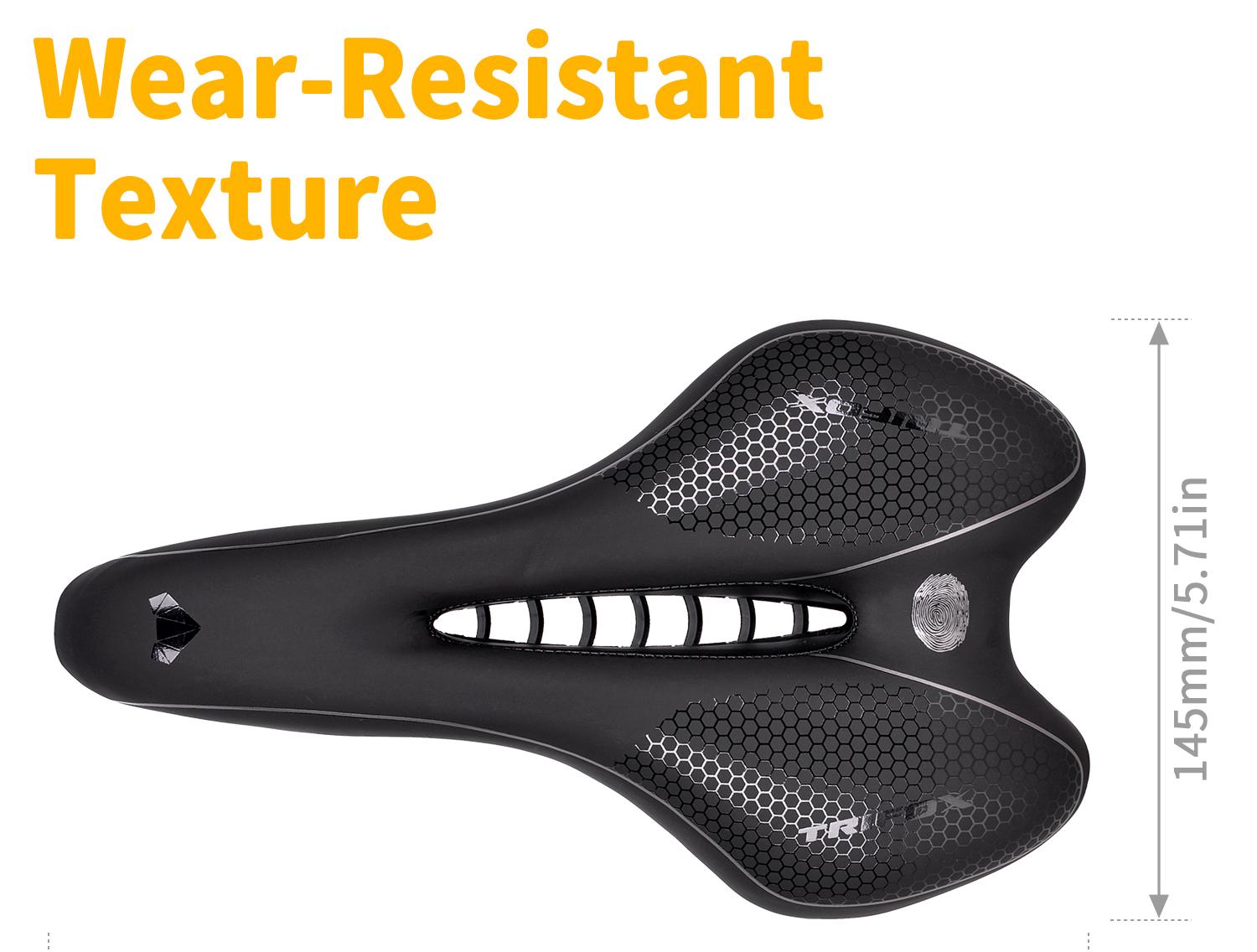
The Upgrade Verdict:
Upgrading to a carbon saddle isn't just about shaving grams; it's about enhancing the fundamental connection between you and your bike. The blend of dramatic weight reduction, efficient power transfer, surprising comfort through intelligent design, and superior breathability creates a noticeably better riding experience. If you're ready to feel more connected, efficient, and comfortable, especially on demanding rides, a saddle like the Trifox CS200 is a worthy investment. It transforms a crucial contact point from a necessary component into a performance asset. Make the switch and feel the difference!
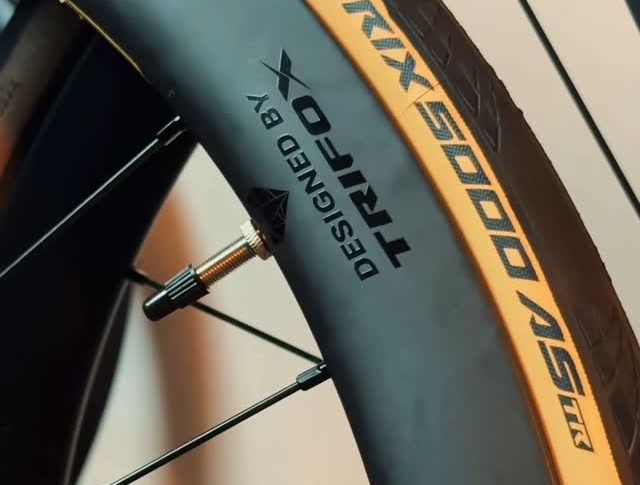
Forget "just" improved stopping power – switching to a dedicated disc brake wheelset unlocks a cascade of performance benefits that fundamentally elevate your road riding. It's not an incremental upgrade; it's a transformation in control, confidence, and capability.
Why Disc Wheelsets Rule the Road:
1. Unshakeable Confidence, Anywhere, Anytime: Rim brakes falter in wet grit or on long, steep descents. Discs deliver consistent, powerful, and modulated braking performance regardless of weather, road grime, or gradient. This translates directly to riding faster with more control when it matters most.
2. Aerodynamic & Structural Advantages: Free from the need for a braking surface, disc wheelsets allow for wider, deeper, and more aerodynamically optimized rim profiles. This reduces drag for free speed. The rim itself is also stronger without the wear surface, enabling lighter constructions and improved impact resistance.
3. Tubeless Paradise: Disc wheelsets are the perfect partners for tubeless tires. Wider rims create a better tire profile for lower rolling resistance, enhanced grip, and the holy grail: fewer flats at lower pressures. No more worrying about brake track wear from heat during hard descents either.
4. Future-Proof Performance: The industry standard is clear. Disc brakes dominate new road bikes. Investing in a quality disc wheelset ensures compatibility with the latest frames and groupsets, protecting your upgrade path.
The Trifox WT11: Performance Engineered for Disc:
The WT11 Disc Brake Centerlock Clincher Carbon Wheelset embodies these advantages:
- Lightweight Carbon Construction: Prioritizes acceleration and climbing response.
- Optimized Aero Depth: Balances speed and crosswind stability.
- Wider Rim Profile: Enhances tire performance and supports tubeless setups seamlessly (valves included!).
- Reliable Centerlock Interface: Ensures secure rotor mounting and easier maintenance.
- Stiffness & Durability: Engineered for powerful sprints and demanding riding.
Who Wins with Disc Wheels?
- All-Weather Warriors: Ride confidently rain or shine.
- Descenders & Climbers: Brake later, descend faster, climb without rim heat worries.
- Speed Seekers: Leverage superior aero and tubeless efficiency.
- Tech Adopters: Invest in the modern standard.
Ready for Uncompromised Control & Speed?
Upgrade your stopping power, unlock aerodynamic gains, embrace tubeless simplicity, and future-proof your ride. Disc wheelsets aren't just better brakes; they're the foundation for a faster, safer, and more enjoyable road experience.
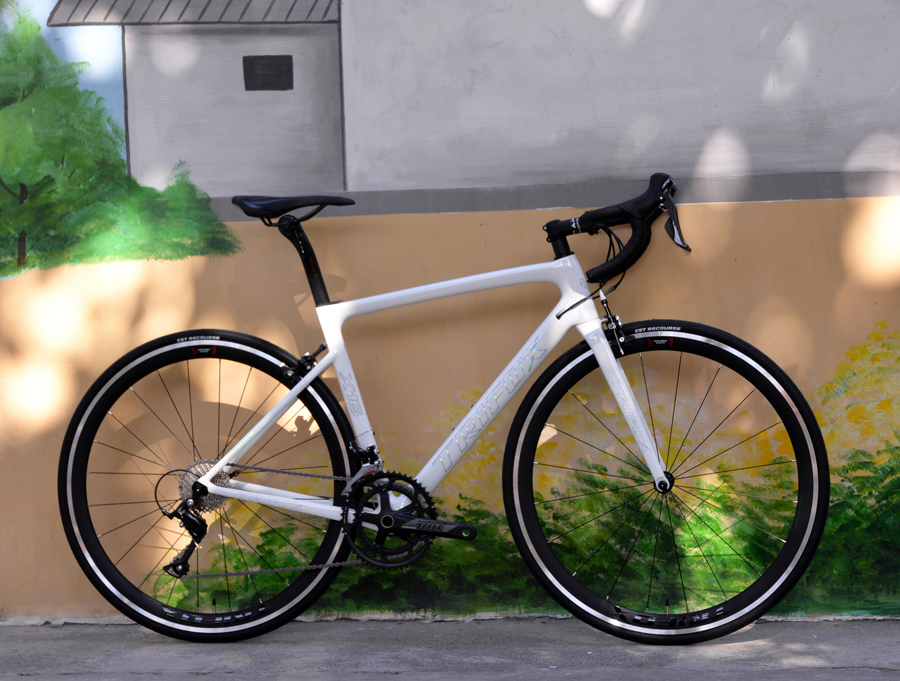
Imagine slicing through headwinds, floating up climbs, and feeling every pedal stroke ignite instant acceleration. This isn’t fantasy—it’s the reality of riding an ultra-light road bike. When your entire machine weighs less than a weekend grocery haul, every aspect of cycling transforms from effort to exhilaration.
Why Ultra-Light Matters:
1. Climbs Become Conquests: Shedding weight is the ultimate climbing hack. A lighter frame demands less energy to defy gravity, turning grueling ascents into rhythmic, rewarding efforts. You’ll crest hills faster—and smile wider.
2. Explosive Acceleration: Stop-and-go traffic? Sprint segments? Ultra-light bikes leap forward with minimal input. The reduced mass means near-instant response to power, making surges feel effortless and races decisive.
3. Agile Handling: Cornering tight descents or navigating technical routes becomes intuitive. A featherweight frame dances beneath you, offering surgical precision and confidence at high speeds.
4. Endurance Boost: Less weight = less fatigue. Ride longer, push harder, and finish strong without the dead-legged feeling of hauling excess mass.
The Trifox Difference:

The 700c Carbon Fiber Ultra-Light Road Bicycle isn't just light—it's intelligently engineered. Its monocoque carbon frame blends minimal weight with optimized stiffness, ensuring zero power loss on sprints or climbs. Paired with aerodynamic tube shaping and compatibility with high-end components, it delivers pro-level performance without the pro-level price.
Who It's For:
Climbers: Conquer grades you once walked.
Racers: Gain seconds where they matter most.
Endurance Riders: Cover miles with leftover energy.
Upgraders: Feel your first true "race bike" epiphany.
Ready to Redefine Your Limits?
An ultra-light bike isn't an upgrade—it's a revelation. The Trifox 700C rewrites your relationship with the road, turning struggle into flow and effort into euphoria.


























































